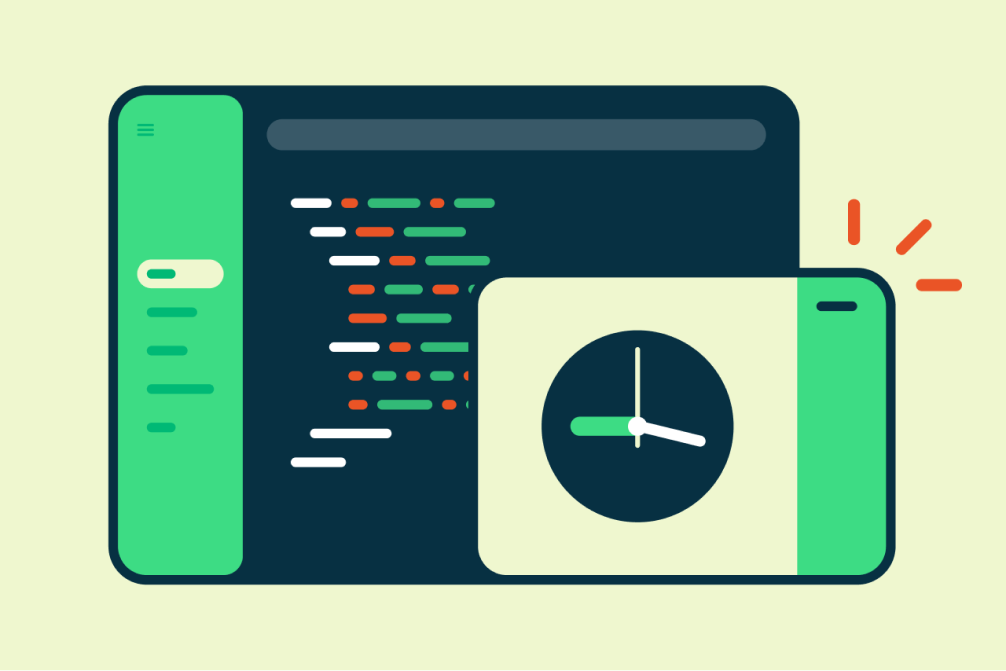注意: 錶面必須符合錶面格式,才能安裝在預先安裝 Wear OS 5 以上版本的裝置上,且所有在 Google Play 發布的新錶面都必須符合錶面格式。
2026 年 1 月起,所有 Wear OS 裝置都必須使用錶面格式,才能安裝錶面。
如要進一步瞭解使用者會看到的異動,請參閱這篇說明中心文章。

使用者查看手錶時,最先看到的就是錶面,因此錶面是 Wear OS 上使用率最高的介面。使用者會根據自己的風格,透過錶面打造個人專屬的智慧手錶,並快速一覽重要資訊。
建立錶面的選項
錶面格式 (WFF) 可讓您輕鬆建構錶面。錶面格式是 Google 與 Samsung 合作開發的宣告式 XML 格式,可用於設定錶面的外觀和行為。與其他錶面 API 不同,錶面格式只需要資源和宣告式指令,不必在 APK 中加入用於算繪錶面的程式碼。Wear OS 平台會負責轉譯錶面所需的邏輯,讓您可以專注於實現創意構想,而不必在程式碼最佳化或電池效能方面多費心思。
相較於使用舊版 Jetpack Watch Face 程式庫建構的錶面,以這個格式建構錶面可減少維護和更新的需求。舉例來說,您無需更新錶面,即可提高效能或減少電池耗電量,甚至取得最新的錯誤修正項目。
我們提供多種建立錶面的方式:
- 如果您偏好所見即所得的工具,直接設計錶面,請使用 Watch Face Studio。這項工具是 Google 與 Samsung 合作開發。
- 如果您是設計人員,且熟悉使用 Figma,或是開發人員想加快建立錶面的前幾個步驟,請使用 Watch Face Designer,您可以在 Figma 中透過外掛程式存取這項工具。
如果您偏好手動管理手錶設定,並發布至自己的應用程式商店,可以使用 XML 定義錶面。Android Studio 支援建構使用錶面格式的錶面。接著,您可以在裝置上執行這些錶面,以視覺化方式呈現。
建立錶面後,您可以透過多種方式發布,例如透過 Google Play 或使用 Watch Face Push。
關於格式
錶面格式 (WFF) 錶面的核心是定義錶面版面配置和行為的文件。這份文件以 XML 編寫,符合 WFF 規格。
Wear OS 系統包含錶面算繪器元件。這個元件會剖析 WFF XML 文件,並從中算繪錶面。系統會視需要提取圖片和字型等其他資源。
也就是說,您只需要花時間描述錶面的外觀,Wear OS 就會處理所有繪製錶面的程式碼。
如要將錶面格式錶面部署至裝置,請將 XML 文件封裝在標準 AAB 或 APK 套件中。
下圖為做法總覽:

WFF 中的版本管理
隨著錶面格式不斷演進,系統會新增更多元素、屬性和資料來源,這些都會使用錶面格式。
舉例來說,WFF 第 2 版導入了天氣支援功能做為資料來源,但 WFF 第 1 版沒有這項功能。
設計錶面時,請注意要使用的功能及其適用版本。參考指南會標示所有功能及其適用情形。
每個版本的 WFF 都與 Wear OS 版本一致:
| WFF 版本 | 最低 Wear OS 版本 | 最低 API 級別 |
|---|---|---|
| 1 | 4 | 33 |
| 2 | 5 | 34 |
| 3 | 5.1 | 35 |
| 4 | 6 | 36 |
請參閱這份指南,瞭解如何正確設定 AndroidManifest.xml 和 Gradle 建構檔案。
瞭解詳情
請參閱下列指南,進一步瞭解錶面格式:
- 可用功能:瞭解各個版本的錶面格式支援哪些錶面功能。
- 設計指南:瞭解錶面版面配置和使用者體驗的最佳做法。
- 錶面設計工具:瞭解如何使用 Figma 外掛程式建立錶面。
- 設定:設定支援錶面格式的 Android App Bundle。
- GitHub 範例:開始建構錶面範例,然後部署至 Wear OS 模擬器或實體裝置。
- 記憶體用量最佳化:瞭解如何設定錶面,讓系統在算繪錶面時盡可能耗用最少記憶體。
- XML 參考資料:瞭解屬於錶面格式檔案的個別元素。根元素一律為
WatchFace。注意:如要在 XML 參考資料中查看特定錶面格式版本的相關功能,請確認文件頁面頂端已選取適當的版本按鈕。 - 發布指南:瞭解如何透過 Play 商店和替代方法發布錶面並營利。
- WFF 和記憶體驗證工具:使用這些開放原始碼工具檢查 Watch Face Format 檔案是否有錯誤,並確認記憶體用量是否符合規定,再提交至 Google Play。

